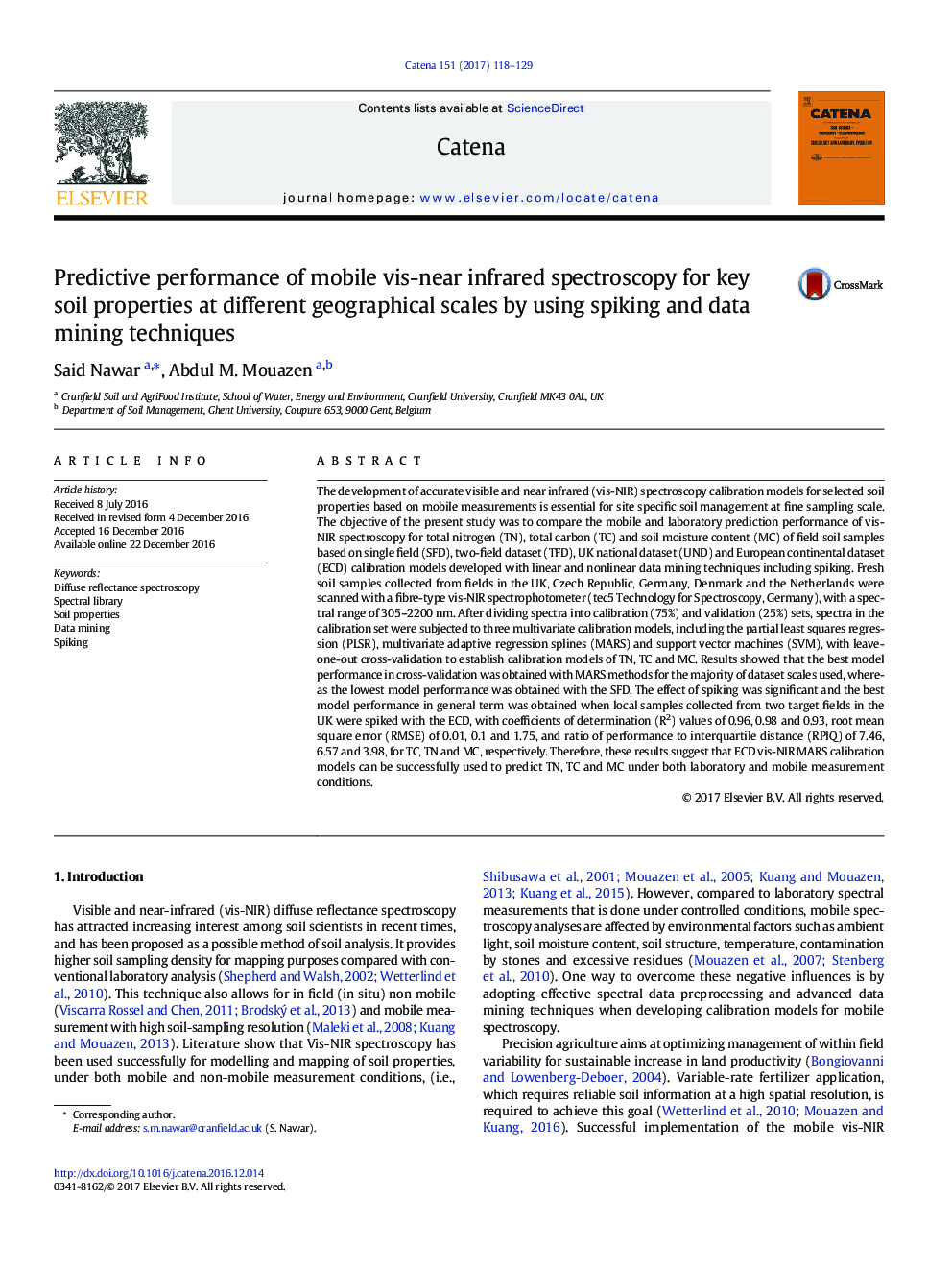| کد مقاله | کد نشریه | سال انتشار | مقاله انگلیسی | نسخه تمام متن |
|---|---|---|---|---|
| 5770178 | 1629203 | 2017 | 12 صفحه PDF | دانلود رایگان |

- The performance of on-line vis-NIR for estimating soil TN, TC and MC were evaluated.
- Comparing between four datasets single field, two-field, national and European
- Multivariate analysis PLSR, SVM and MARS and spiking techniques were used.
- The best results obtained using the MARS calibration method with European dataset
The development of accurate visible and near infrared (vis-NIR) spectroscopy calibration models for selected soil properties based on mobile measurements is essential for site specific soil management at fine sampling scale. The objective of the present study was to compare the mobile and laboratory prediction performance of vis-NIR spectroscopy for total nitrogen (TN), total carbon (TC) and soil moisture content (MC) of field soil samples based on single field (SFD), two-field dataset (TFD), UK national dataset (UND) and European continental dataset (ECD) calibration models developed with linear and nonlinear data mining techniques including spiking. Fresh soil samples collected from fields in the UK, Czech Republic, Germany, Denmark and the Netherlands were scanned with a fibre-type vis-NIR spectrophotometer (tec5 Technology for Spectroscopy, Germany), with a spectral range of 305-2200Â nm. After dividing spectra into calibration (75%) and validation (25%) sets, spectra in the calibration set were subjected to three multivariate calibration models, including the partial least squares regression (PLSR), multivariate adaptive regression splines (MARS) and support vector machines (SVM), with leave-one-out cross-validation to establish calibration models of TN, TC and MC. Results showed that the best model performance in cross-validation was obtained with MARS methods for the majority of dataset scales used, whereas the lowest model performance was obtained with the SFD. The effect of spiking was significant and the best model performance in general term was obtained when local samples collected from two target fields in the UK were spiked with the ECD, with coefficients of determination (R2) values of 0.96, 0.98 and 0.93, root mean square error (RMSE) of 0.01, 0.1 and 1.75, and ratio of performance to interquartile distance (RPIQ) of 7.46, 6.57 and 3.98, for TC, TN and MC, respectively. Therefore, these results suggest that ECD vis-NIR MARS calibration models can be successfully used to predict TN, TC and MC under both laboratory and mobile measurement conditions.
Journal: CATENA - Volume 151, April 2017, Pages 118-129